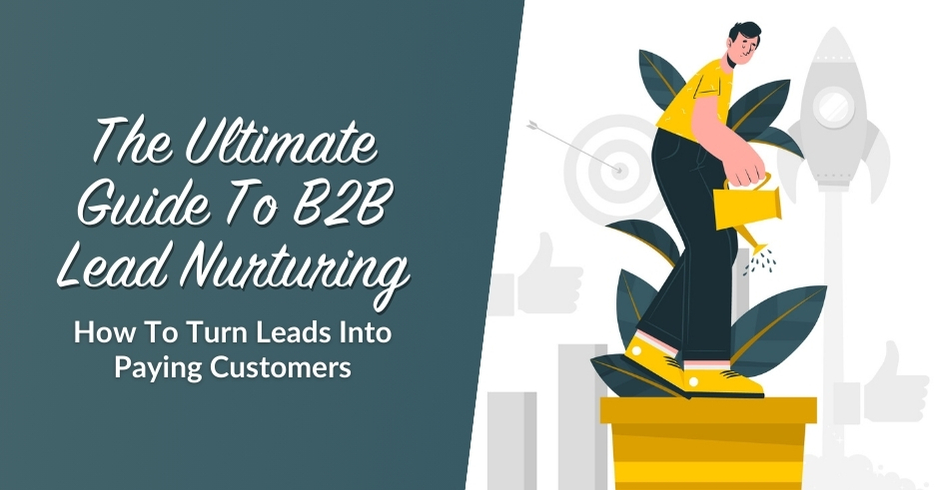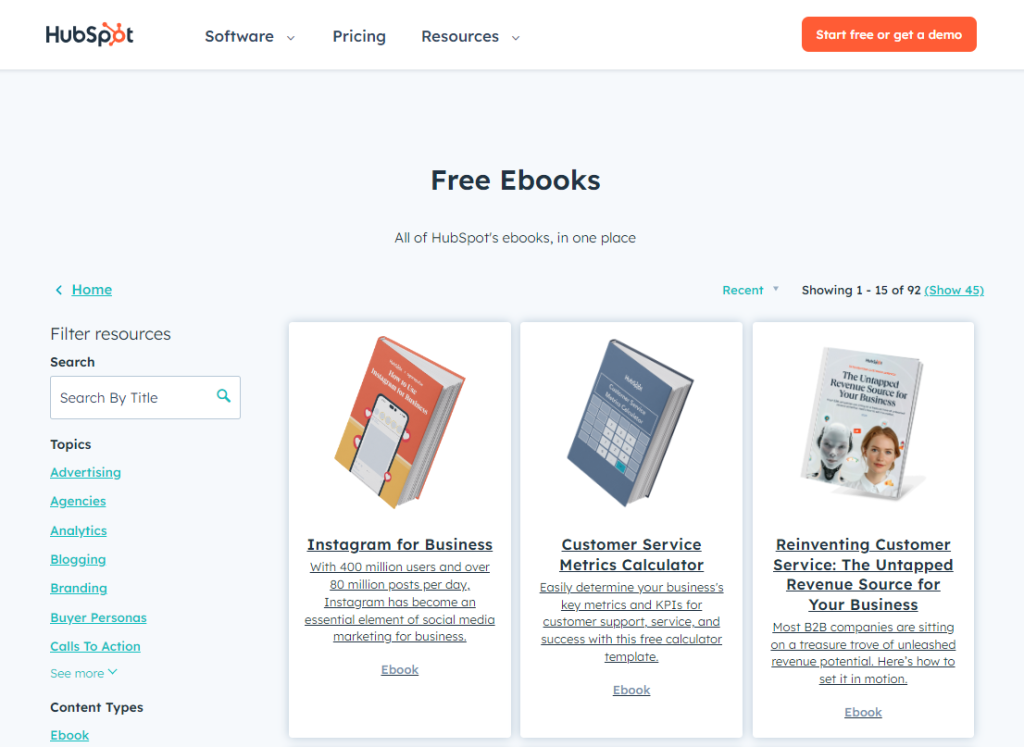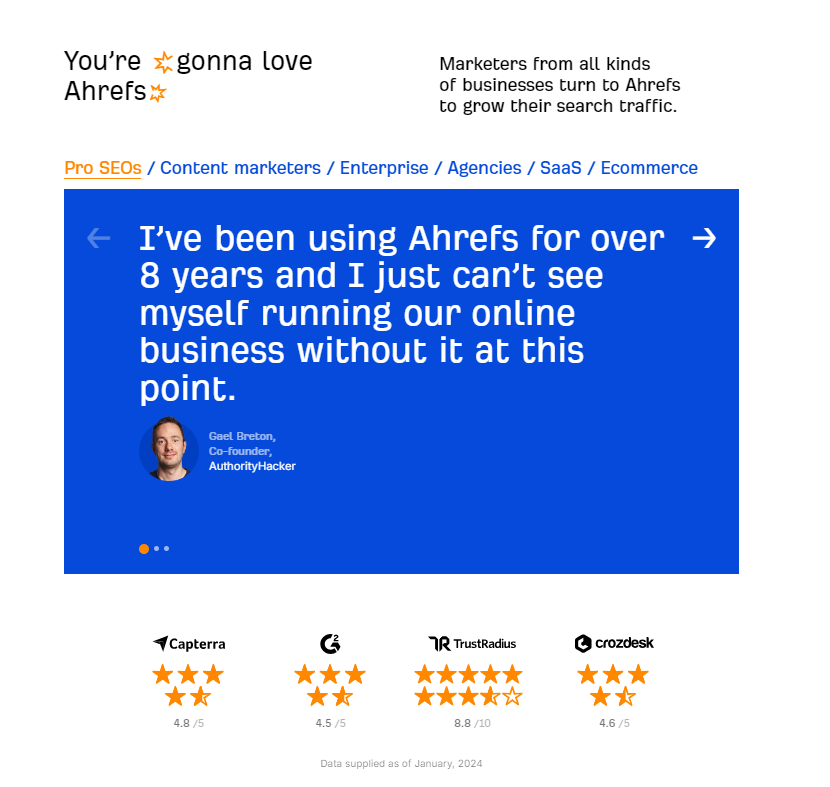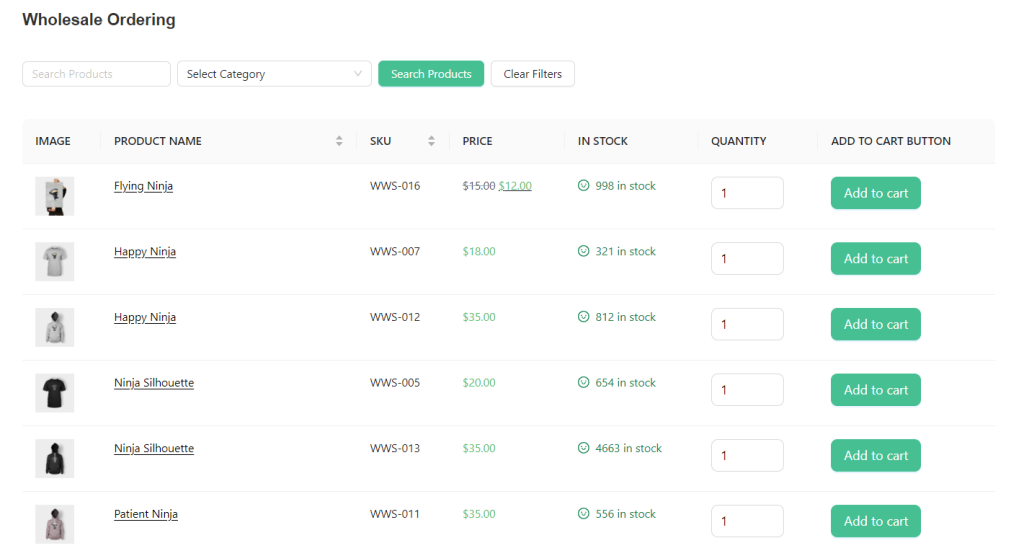
So you’ve successfully increased your online store’s traffic, attracted new B2B leads, and encouraged them to sign up on your store… That’s amazing, but the real hustle only begins from there. To convert B2B leads into paying customers, you need a solid B2B lead nurturing process in place. With a B2B lead nurturing strategy, you can provide value to your customers, deliver the right messages at the right time, and guide them through the sales funnel.
We’ve got your back! In this article, we’ll walk you through everything you need to know about B2B lead nurturing. We also have some juicy and actionable strategies for you. So, without further ado, let’s dive straight in.
Table Of Contents
What Is B2B Lead Nurturing?
B2B lead nurturing is the process of cultivating relationships with potential leads–it encompasses all the strategies marketers use to guide prospects through the sales funnel toward conversion.
Crafting a successful B2B lead nurturing strategy requires a deep understanding of the needs, pain points, and motivations of your prospects at every stage of the buying journey. Each phase presents you with an opportunity to engage and educate your leads and move them closer to conversion.
Here’s how creating a solid lead nurturing strategy can benefit your business:
- Maximize conversion rates: By providing relevant information and tailoring content for each stage of the buying journey, you increase the likelihood of turning leads into paying customers.
- Builds trust and enhances customer relationships: Delivering the right content at the right time establishes your business as a trusted source of information, which then builds your credibility and industry authority.
- Optimizes your marketing ROI: With a tailored content strategy in place, you can focus your marketing efforts and resources on high-quality leads with the highest chance to convert. This makes your marketing campaigns more effective and efficient.
Understanding The B2B Lead Nurturing Process
If you don’t have a lead nurturing process in place just yet, it can be overwhelming to know where to begin. No worries, we’re here to help out! The first step to creating an effective B2B lead nurturing process is to understand the process.
Below, let’s walk through the typical stages of a lead nurturing process:
1. Prospect Identification
Who are your ideal customers? Knowing the answer to this question is where it all begins. Consider creating a B2B customer profile–this is a description of the most ideal customer you want to target for your business.

You can begin crafting this persona by analyzing your current customer base. For instance, you can look into the most common characteristics of your existing customers, including their industry, company size, location, and purchase history.
Understanding the needs, pain points, and unique characteristics of your target audience lays the foundation of an effective lead nurturing strategy.
2. Segmentation
Segmenting your leads will help you tailor your messaging more effectively. This process entails categorizing customers based on relevant criteria. For example, you can segment prospects by industry, location, or based on which stage they are in in the buying journey. You can leverage technologies and automation tools such as CRM systems to make this process easier.
💡Power Tip: Consider adding registration forms on your website to capture information about your B2B leads. Tools like Wholesale Lead Capture allow you to easily create B2B registration forms for your WooCommerce store. By learning about your prospects from the get-go, you can tailor their experience with your business and encourage them to convert.
3. Lead scoring
Lead scoring is a critical aspect of B2B lead nurturing. It allows you to identify the leads with the most potential to convert and inform where to best allocate your marketing efforts and resources. This process entails evaluating and assigning “scores” to prospects based on their level of engagement and fit with your ideal customer persona.
There are many ways that you can go about this process, but numeric scoring is typically used. For example, you can set a numeric threshold to determine which of your prospects are hot leads. Then, you can assign scores based on their engagement levels.
For instance:
- Visiting the pricing page: +5 points
- Requesting a demo: +10 points
- Subscribing to the newsletter: +5 points
- Downloading a whitepaper: +15 points
Assigning scores to specific actions and behaviors allows you to gauge the level of interest and intent to purchase of each lead.
4. Tailoring content
Now that your leads have been segmented and scored, it’s time to craft content that will resonate with your prospects. This is where the “nurturing” starts–by delivering relevant content, you can engage your leads, educate them, and move them towards conversion.
Start by mapping out the buyer’s journey for each segment. Then, identify which type of content will be most helpful for your prospects for each stage. For example, leads in the awareness stage would likely benefit from education blog content or videos that address common questions and pain points. On the other hand, those in the decision stage might need content like product demos or case studies as a final nudge to make their purchasing decisions.
This stage also entails leveraging multiple channels and platforms to reach your leads at different touchpoints in the buying journey. Experiment with channels like email, social media, or targeted search engine advertising to meet your clients where they’re at.
6 B2B Effective Lead Nurturing Strategies
We’ve covered the basics–now’s the exciting part. In this section, we reveal actionable and effective strategies you can leverage for your B2B lead nurturing strategy.
1. Send out personalized emails
Email marketing is a cornerstone strategy for B2B lead nurturing for a good reason–it’s easy to implement and highly effective! In fact, according to industry insights, 47% of marketers consider email marketing as the most effective lead nurturing tactic.
However, if you want to stand out in today’s crowded landscape, it’s crucial to put in extra effort. Consider leveraging advanced email marketing tactics that go beyond basic personalization.
Here are some key strategies:
- Personalized dynamic content: Leverage tools to tailor the content of your emails based on past interactions or preferences. For example, you can include product recommendations or personalized offers based on the pages they have visited on your website.
- Behavior-triggered emails: Also consider implement behavior-triggered email campaigns that automates personalized emails based on lead behavior. For instance, if a prospect leaves an item on their cart, you can send an automated email follow up with additional information or a special offer for that product.
- Email segmenting: Group your email list based on specific characteristics or stages in the buying journey, then tailor your campaigns accordingly. For example, you can create a campaign for newly registered B2B leads to welcome them and provide them with valuable resources to get started.
2. Publish valuable targeted content
Content is king–this also holds true when it comes to B2B lead nurturing. By publishing relevant and tailored content that addresses the pain points and interests of your audience, you can attract and engage your prospects. This also helps you build thought leadership and credibility in your industry.
The key to creating engaging content is understanding your audience. Leverage the information you have gathered through market research, customer feedback, and data analysis to determine what kind of content will resonate the most with your target market. Make it relatable and accessible to your audience.
Check out this amazing example from HubSpot:

There are several content formats you can publish, including:
- Blog posts: Publish informative blog posts that answer common questions faced by your target market.
- Case studies: Showcase success stories of existing customers, revealing how your products or services have helped them achieve their desired results.
- Ebooks: Consider publishing ebooks that offer in-depth insights and solutions to industry challenges.
- Infographics: Visually appealing infographics make it easier to convey complex information or data, and are also highly sharable, helping maximize your reach.
💡Power Tip: Try experimenting with gated content. These are resources (such as whitepapers or ebooks) that are accessible to users only after they provide their contact information. Consider adding a registration form to gate these types of content, so you can capture the information of potential leads.
3. Display customer reviews
According to industry research, over 90% of B2B buyers are more likely to purchase after seeing positive reviews. Despite this, only 1 in 5 companies consider adding reviews to their marketing strategy. This is a huge missed opportunity!
By prominently displaying customer reviews, you build trust and credibility with potential leads from the outset. Consider reaching out to satisfied customers and requesting reviews and testimonials. Then, make sure to showcase them prominently on your website and marketing materials. It’s also helpful to create a dedicated testimonial section where visitors can easily read reviews from real customers.
Check out the example below from Ahrefs:

Publishing case studies is another amazing way to leverage social proof. In this content, you can provide detailed insights about how your product has helped customers get the results they want. They showcase the tangible value your offerings can deliver and encourage potential customers to try out your products.
4. Make the ordering process as seamless as possible
As prospects move through the buying journey, you want them to have the best ordering experience possible. The last thing you want is to successfully encourage a lead to convert, only for them to get annoyed with a complicated checkout process.
Therefore, make sure that your website is easy to navigate and user-friendly. Implement an ordering system that allows B2B buyers to easily:
- View B2B prices
- Find the products they need
- Search for products through filters, SKUs, names, and specifications
- Add items to their carts in bulk
- Enjoy multiple payment options and payment methods

💡Power Tip: Consider implementing an all-in-one solution like Wholesale Suite. Tailor-made for WooCommerce B2B, this collection of plugins allows store owners to transform their online store into a B2B hub. With Wholesale Suite, WooCommerce store owners can seamlessly manage wholesale pricing, create B2B bulk order forms, capture leads with registration forms, and offer flexible payment terms to wholesale buyers.
5. Implement retargeting campaigns
Retargeting ads can significantly improve your B2B lead nurturing process. These marketing campaigns target prospects that have interacted with your business but did not complete a desired action. For instance, leads that have visited your product pages or have added items to their carts but left. Running retargeting ads can help you stay top of mind and re-engage prospects who have already shown interest in your offerings.
Start by identifying retargeting opportunities. Leverage the wealth of information from your website analytics or marketing campaigns. Some opportunities to look into are instances of cart abandonment, website visits, and form submissions.
Then, create compelling campaigns that encourage prospects to revisit and take action. For example, you can provide exclusive discounts or perks to encourage customers who have left items on their carts to check out.
6. Host webinars
73% of B2B marketers agree that hosting webinars is one of the best ways to generate high-quality leads. This type of content is powerful, as it allows you to connect with your target market in an interactive way and provide relevant information that addresses their pain points. It’s one of the most effective ways to build industry authority.
The key to making this strategy work is ensuring that your topic delivers the utmost value to your audience. Therefore, choose topics that address common industry challenges or trends that your target market is likely to find important and engaging. Provide opportunities to keep your audience engaged, including Q&A sessions or product demonstrations.
Wrapping Up
Generating B2B leads is just the first piece of the puzzle. To ensure they convert into paying customers, you need to have a solid B2B lead nurturing strategy in place. In this helpful article, we walked you through everything you need to know about this topic.
Firstly, we discussed about the stages of B2B lead nurturing:
Most importantly, we revealed six actionable strategies you can incorporate into your business today to ensure the effectiveness of your lead nurturing plan:
- Send out personalized emails
- Publish targeted content
- Display customer reviews
- Make the ordering process seamless
- Implement retargeting campaigns
- Host webinars
As you move prospects down the sales funnel, it’s crucial to make their experience as frictionless as possible. Leverage all-in-one solutions like Wholesale Suite to ensure this. Created for WooCommerce B2B store owners, this powerful tool enables you to set wholesale prices, capture B2B leads with registration forms, create bulk order forms, and offer flexible payment terms to B2B buyers.
Do you have any questions about this article? Let us know in the comments section below!





Thanks for your great insights!